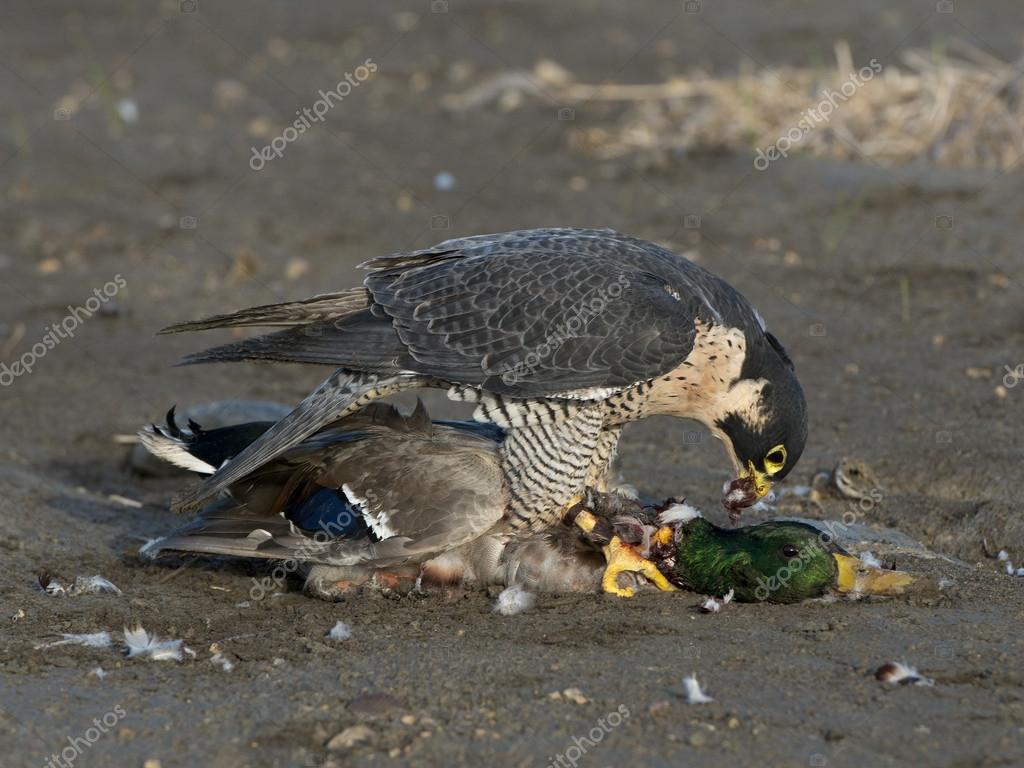
Do peregrine falcons migrate?īritish and Irish peregrine falcons are present all year round, though females and juvenile may move away from upland areas during the autumn. Tower blocks, bridges and cathedrals offer the perfect urban alternative to high cliffs, while feral pigeons and starlings provide a reliable source of food. Peregrine falcons live mostly in open country, hunting over marshes, estuaries and agricultural land.ĭuring the breeding season, they make their nests on crags and rock faces including sea cliffs, quarries and, increasingly, buildings in urban areas. Juvenile peregrines look slightly different to the adults with dark brown plumage, streaks on the underside of their body and pale tips to their feathers. The crown of the head is dark, and they have a black ‘moustache’ which gives them a hooded expression. Their pale breast is spotted, and the undersides of their wings are barred with dark stripes. They have long, bluntly pointed wings and a relatively short tail, with dark blue wings and head. Peregrine falcons are one of the largest and most powerful species of falcon. However, peregrine falcons have a history of persecution, which has pushed them to the very edge of extinction before now though they are currently listed as least concern on the IUCN Red List of Threatened Species. They are also one of the most adaptable and can thrive in urban areas surrounded by humans. Return to the Birds page or to the main Animals page, and visit our climbing web page to learn about the actions we take to protect peregrine falcons nesting in the park.Peregrine falcons are the fastest creatures on the planet, reaching speeds of over 321 kph (200 mph) as they dive to catch their prey. The park monitors 8 to 10 nesting pairs each year however, there are probably more peregrines within Zion. Once nest sites have been selected by the birds, unoccupied cliff areas are re-opened to climbing. Wildlife managers close certain cliffs to climbing in the spring to prevent interference with peregrine nesting. To date, the park has over 25 years of monitoring, making it one of the most comprehensive statistical records for the western United States. The park continues to monitor the breeding success of peregrine falcons in accordance with a mandate from the United States Fish and Wildlife Service. The population of peregrines within Zion was maintained throughout the DDT-caused population crash because of the ideal habitat provided here. The Peregrine Fund's conservation efforts helped populations to rise now over 4,000 breeding pairs. A new organization was established that same year to help the declining populations due to DDT (pesticide) in the United States. In 1970, populations of these falcons were low - only 39 breeding pairs remined in the lower 48. Stop at the Big Bend shuttle stop to catch a glimpse of these incredible birds. Chicks leave the nest, or fledge, from late June through late July. Mating behavior is observed from early March to early May. The sheer rock faces within the park, including Angels Landing, serve as nesting locations for peregrines to rear their chicks. They typically choose crevices on cliff faces between 25 -1,300 feet high for nesting sites. The open landscape and high cliffs of Zion National Park are perfect habitat for peregrine falcons. However, this diving daredevil can reach speeds of 100 to 200 mph while in a stoop, in as quickly as 8 seconds! The fastest ever recorded reached 242 mph or 389 km/h!

Constant travel speed for this bird ranges between 25-34 mph. As it "stoops," or dives, headfirst into the air, it begins to fold its sharply-shaped wings tightly toward its body, forming a diamond or bullet shape to reduce the drag created by the wings. The peregrine initiates its attack from high on a cliff while watching for prey. These aerial killers catch their prey, usually other birds, on the wing. The peregrine falcon is known to travel up 15,000 miles in one migratory year! You can find this fast flier on every continent except Antarctica.

The word peregrine originates from the Latin, peregrinus, meaning "to travel abroad" or "wander." This is in reference to the long migrations of some subspecies that nest in the tundra, migrating some 2500 km (1553 miles) away. Once on the brink of extinction, the peregrine falcon is again one of the most widely-distributed birds in the world thanks to conservation efforts. The fastest animal in the world, the peregrine falcon can be seen soaring among the scarlet cliffs of Zion.


 0 kommentar(er)
0 kommentar(er)
